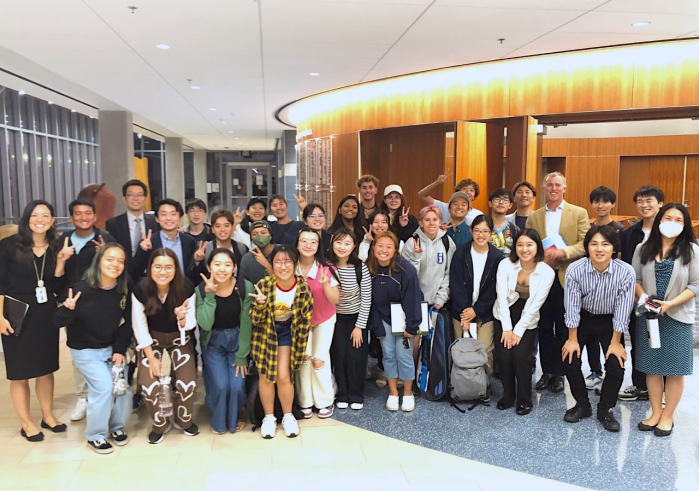A Dialogue on the Daily Work of Building a Culture of Peace

As a high school student in Japan, Michika Nishikawa ’25 worked as a peace messenger to represent the voice of Japanese youth. During an opportunity to engage in dialogue with diplomats from around the world at the United Nations, one said something that resonates with her today.
The diplomat compared the power of youth to the North Wind in Aesop’s fable, “The North Wind and the Sun.” It is powerful and novel, and has significant potential as a catalyst for peace. “For me, peace does not mean people are in an idealistic, euphoric state,” Nishikawa said. “Rather, peace is about one’s persistent attitude and efforts to challenge obstacles, always aiming toward a culture of peace even if the process may seem like a whirlwind.”
Nishikawa was among the SUA students and alumni who demonstrated the truth of these words by sharing how they are creating a culture of peace in their everyday lives during “Living and Translating the Culture of Peace at the Local Level,” Soka’s ninth annual dialogue on peace and non-violence. The hybrid event allowed speakers and audience members to participate in person and online from around the world.
Defining a Culture of Peace
In his opening remarks, Anwarul Chowdhury, former under-secretary-general and United Nations ambassador, discussed the essential elements for understanding the difference between “peace” and a “culture of peace.”
“When we say peace, we have a tendency to feel it will be done by diplomats … It is somebody else’s job,” Chowdhury said. “But when we say, ‘‘culture of peace,’ it is my job. The culture of peace starts with myself.”
Dr. Jacqueline Mills ‘08, visiting assistant professor of general education, global health, and health professions advisor, described an early step in her journey. As a student, she participated in SUA’s first United Nations Study Tour, where she met Ambassador Chowdhury and learned about the culture of peace for the first time. Dr. Mills had studied the history of genocides in the 20th century the previous year and was feeling disheartened.
During the visit to New York, Dr. Mills also met Benjamin Ferencz, former chief prosecutor of the Nuremberg trials, who was 87 years old at the time. She asked Ferencz how he maintains hope and continues fighting for peace after everything he experienced.
Every day that he works to create peace, Ferencz replied, there is that much less evil in the world. His comment inspired her to continue working for peace in her own way. She subsequently became a physician, has cared for thousands of individuals, and continues to work on addressing inequities in clinical medicine and global health.
Tom Gregg, senior advisor on humanitarian affairs to the United Nations under-secretary-general for humanitarian affairs and senior advisor to the World Health Organization, then shared his wisdom from nearly two decades engaging non-state armed groups and local communities on behalf of governments, the United Nations, and NGOs.
When an SUA student asked what skills he should develop to become an effective leader, Gregg recalled his first boss saying he wanted him to do three things as he began his new job: listen, listen, and listen.
“I think that is something we can all do at every stage of our lives,” Gregg said. “To be a leader, you have to be a good listener.”
